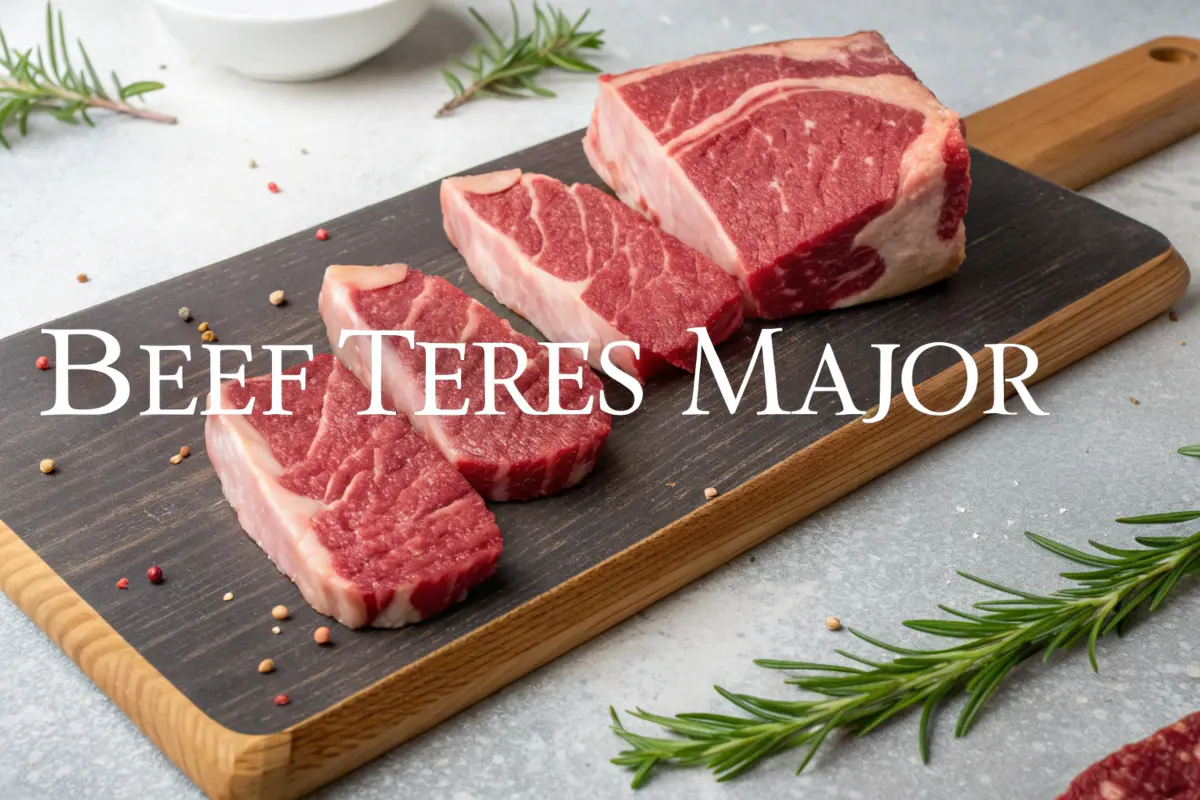When it comes to beef, most people are familiar with popular cuts like ribeye, sirloin, or brisket. However, the beef teres major, a lesser-known yet extraordinary cut, stands out for its tenderness and bold flavor. Often referred to as the “butcher’s secret,” the beef teres major is gaining popularity among chefs and meat enthusiasts for its ability to elevate any steak dish without the hefty price tag of cuts like filet mignon.
If you’re looking to try different beef recipes, you may be interested in beef sausages or learning more about beef cheek. For those exploring healthier options, lean ground beef could be a great choice. And if you’re wondering about how beef compares in terms of flavor, beef tallow for skin might pique your interest with its unique benefits.
As you venture into beef dishes, if you’re also a fan of cookies, you might want to try some delicious treats like half-baked cookies or explore quest cookies. For dessert, check out the tempting cookie monster ice cream!
These interlinks will provide your readers with a well-rounded exploration of beef recipes and other tasty options to complement their culinary adventures.
What Is the Beef Teres Major?
The teres major is a small, oblong cut of beef that comes from the shoulder or chuck primal of the cow. Specifically, it is located near the shoulder blade, where it works relatively little compared to other muscles in the chuck region. This minimal movement results in a tender texture, rivaling the filet mignon for its tenderness, but at a fraction of the cost. Despite its incredible quality, the teres major is not widely known, making it a hidden gem for those in the know.
Key Characteristics of the Beef Teres Major:
- Tenderness: Often compared to filet mignon, it’s one of the most tender cuts of beef.
- Flavor Profile: Rich, beefy flavor with slight marbling that enhances its juiciness.
- Size: Usually weighs between 8 to 12 ounces, making it ideal for individual portions.
- Affordability: A more budget-friendly option than premium cuts like tenderloin or ribeye.
The teres major cut requires expert butchery skills to extract it cleanly from the shoulder blade area, which is why it’s less common in regular supermarkets. This exclusivity adds to its appeal, making it a coveted choice among food enthusiasts who enjoy exploring unique and high-quality meats.
The Anatomy of the Beef Teres Major
The teres major muscle lies in the cow’s shoulder (specifically in the chuck section), an area typically associated with tougher, more muscular cuts of beef. However, the teres major muscle itself performs minimal work, allowing it to remain tender. Because it’s tucked away and surrounded by tougher muscles, it takes skill and precision to extract without damaging the cut. This is one reason why it’s not as prevalent in mainstream grocery stores.
Compared to other cuts from the chuck, such as chuck roast or flat iron steak, the teres major is unique in its tenderness. It’s often grouped with the mock tender and the shoulder clod, but the teres major stands apart as the most premium and sought-after cut from this section.
Why Choose Beef Teres Major Over Other Cuts?
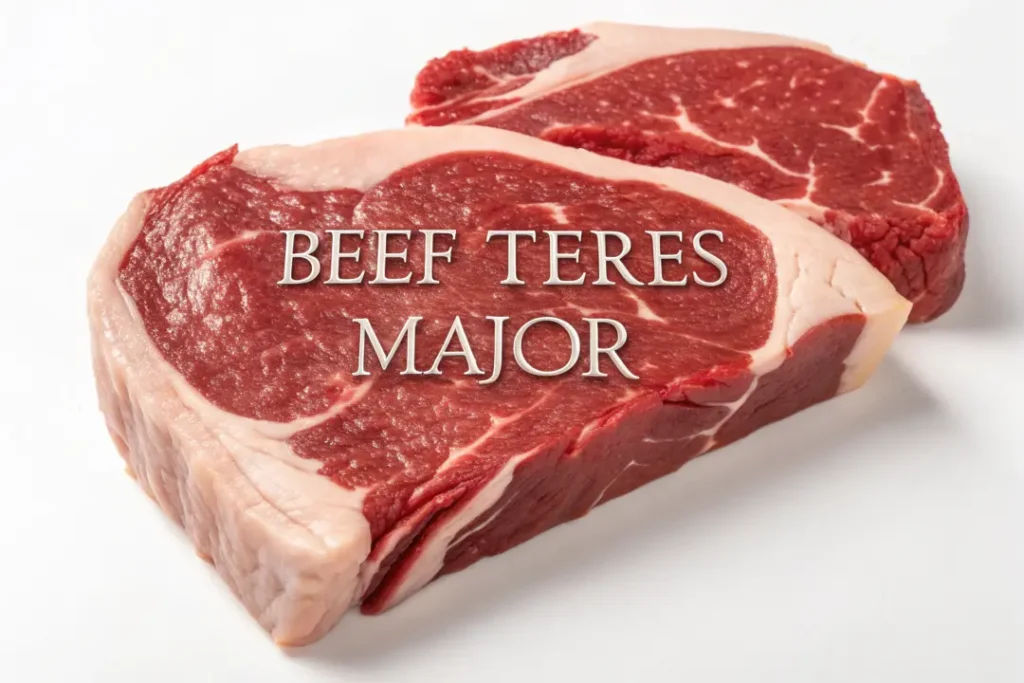
The teres major offers a rare combination of affordability, tenderness, and flavor. Here’s how it compares to other cuts:
1. Tender Like Filet Mignon
The teres major is often regarded as second only to the filet mignon in tenderness. Its fine-grained texture ensures a melt-in-your-mouth experience, making it an excellent alternative to pricier, high-end steaks.
2. Rich, Beefy Flavor
Unlike the filet mignon, which is sometimes criticized for being too mild in flavor, the teres major boasts a deep, robust beefiness. It’s lightly marbled, which adds to its juiciness without being overly fatty, making it a flavorful yet lean choice.
3. Versatility in Cooking
The teres major adapts well to a variety of cooking methods, from grilling to pan-searing and even sous vide. It’s also a fantastic cut for slicing into medallions or incorporating into gourmet dishes like beef salads, steak sandwiches, or stir-fries.
4. Cost-Effective
While the ribeye or tenderloin can cost a fortune, the teres major provides similar quality at a fraction of the price. Its affordability makes it an excellent choice for those who want restaurant-quality steak at home without breaking the bank.
How to Prepare and Cook Beef Teres Major
Cooking the teres major is relatively simple, but treating it with care ensures that its tenderness and flavor shine through. Here’s a step-by-step guide to preparing this delicious cut of beef.
1. Trimming and Prepping the Cut
If you purchase the teres major from a butcher, it may come with a thin layer of silver skin or connective tissue that needs to be trimmed away. This step is crucial, as silver skin can cause the meat to become chewy. Ask your butcher to trim it for you, or do it yourself with a sharp knife.
2. Seasoning the Meat
The teres major has a naturally rich flavor, so it doesn’t require heavy seasoning. A simple combination of salt and pepper is often enough to enhance its natural taste. For additional flavor, you can use a dry rub with ingredients like garlic powder, smoked paprika, rosemary, or thyme.
3. Choosing a Cooking Method
The teres major is incredibly versatile and works well with various cooking techniques. Here’s how you can prepare it:
Grilling
- Preheat your grill to medium-high heat.
- Lightly oil the steak to prevent sticking.
- Grill for 4-6 minutes per side for a medium-rare finish.
- Use a meat thermometer to ensure the internal temperature reaches about 130°F for medium-rare.
Pan-Searing
- Heat a skillet over high heat and add a small amount of oil or butter.
- Sear the steak for 3-4 minutes on each side until a golden-brown crust forms.
- Transfer to an oven preheated to 400°F and finish cooking for 5-7 minutes.
Sous Vide
- Set your sous vide machine to 130°F and cook the steak for 1.5-2 hours.
- After cooking, sear the steak in a hot skillet to achieve a flavorful crust.
Roasting
- Season the teres major, then sear it in a hot pan to develop a crust.
- Transfer it to an oven at 375°F and roast for 10-15 minutes, depending on the desired doneness.
4. Resting and Slicing
Allow the steak to rest for 5-10 minutes after cooking. This step is essential to retain its juices and enhance its tenderness. When slicing, always cut against the grain to ensure each bite is as tender as possible.
Pairing Beef Teres Major with Sides and Sauces
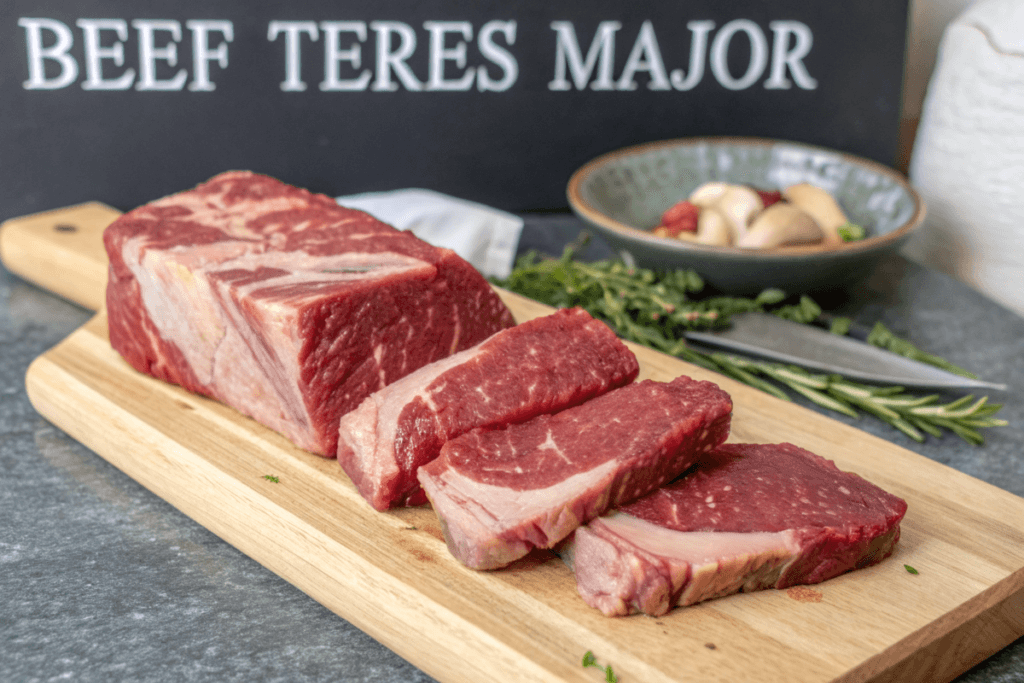
The teres major pairs beautifully with a variety of sides and sauces, making it a versatile centerpiece for any meal. Here are some pairing suggestions:
Classic Sides
- Mashed potatoes with garlic and chives.
- Grilled asparagus or roasted Brussels sprouts.
- Creamed spinach or a light arugula salad.
Sauces
- Red wine reduction or bordelaise sauce for a sophisticated touch.
- Garlic herb butter for a rich, flavorful topping.
- Chimichurri for a zesty, tangy complement.
Where to Buy Teres Major
Since the teres major is not a mainstream cut, you may need to go the extra mile to find it. Here are some tips:
- Local Butcher Shops
Most specialty butchers are familiar with this cut and can provide it fresh and well-trimmed. - Online Meat Retailers
High-quality online suppliers often stock the teres major, marketed as “shoulder tender” or “petite tender.” - Farmers’ Markets
Some local farmers or ranchers may offer teres major cuts, especially those focusing on grass-fed or organic beef. - High-End Restaurants
If you’re not ready to cook it yourself, visit a steakhouse that features unique cuts of beef. Many chefs use the teres major for its versatility and gourmet appeal.
Why Is the Beef Teres Major Overlooked?
Despite its incredible qualities, the teres major remains relatively unknown for a few key reasons:
- Skill-Intensive Butchery
Extracting the teres major requires precision and expertise, as it’s nestled within the chuck primal surrounded by tougher muscles. This makes it less practical for large-scale meat processors. - Small Size
The teres major is a small cut, which limits its availability for mass-market production. Most cows yield only about two teres major cuts, making it a specialty item rather than a common grocery store product. - Lack of Consumer Awareness
Because it’s not widely marketed, many consumers remain unaware of the teres major. However, its popularity is growing as more chefs and butchers highlight its exceptional qualities.
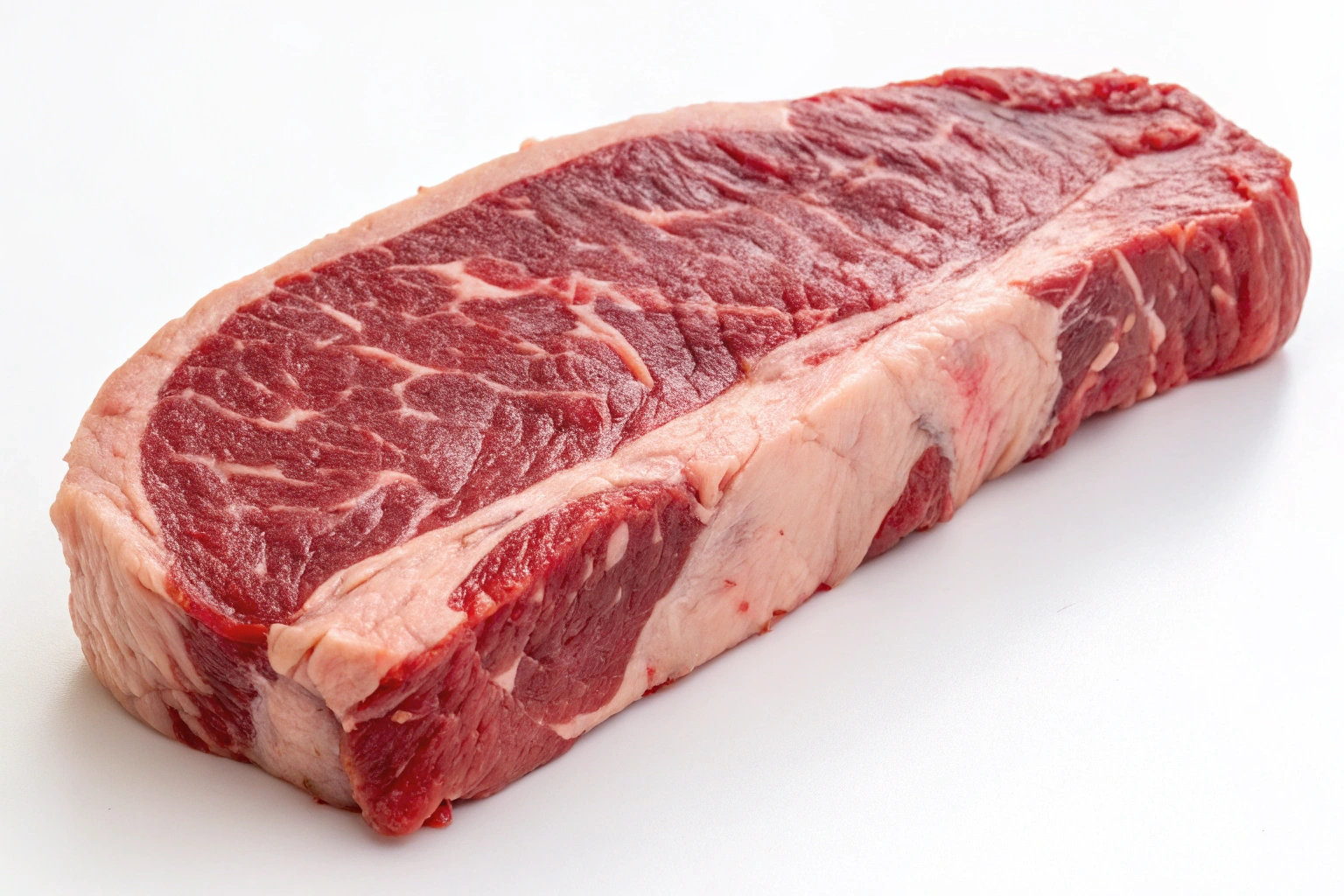
Why You Should Try the Teres Major
The beef teres major is truly a hidden gem, offering the perfect balance of tenderness, flavor, and affordability. Whether you’re a home cook looking to elevate your steak game or a foodie on the hunt for a new favorite cut, the teres major is a must-try. Its versatility, rich flavor, and melt-in-your-mouth texture make it a standout choice for any occasion.
If you’re ready to break away from the usual ribeyes and sirloins, the teres major is your gateway to a whole new world of beef. Seek it out, savor its flavor, and discover why it’s one of the best-kept secrets in the culinary world.
Exploring the Beef Teres Major in Greater Depth
Now that we’ve covered the basics of the teres major, it’s time to delve deeper into the nuances of this exceptional cut of beef. In Part 2, we’ll explore its unique culinary applications, delve into its nutritional benefits, and learn how to select and store it properly. We’ll also examine why the teres major is growing in popularity and provide even more insights into how to make the most of this hidden gem in the kitchen.
The Culinary Versatility of Teres Major
What makes the teres major truly special is its remarkable versatility. This cut can be used across a wide range of dishes and cooking techniques, from quick weeknight dinners to showstopping meals for special occasions. Here’s how it can be utilized in different ways:
1. Steaks and Medallions
- One of the most popular ways to prepare the teres major is as a steak.
- It can be left whole and cooked like a traditional steak or sliced into smaller medallions for easier portioning.
- Medallions work particularly well in plated gourmet dishes, as they offer an elegant appearance without sacrificing flavor or texture.
2. Beef Stir-Fries
- Because of its tenderness and ability to hold its shape, the teres major is an excellent choice for stir-fries.
- Thinly slice it against the grain and cook it quickly over high heat with vegetables, soy sauce, and aromatics for a flavorful, protein-packed dish.
3. Skewers and Kebabs
- Cube the teres major and skewer it alongside vegetables like bell peppers, onions, and cherry tomatoes.
- The beef’s tender texture ensures it stays juicy and flavorful even when grilled over high heat.
4. Sandwiches and Wraps
- Thinly slice the cooked teres major and layer it in a sandwich or wrap.
- Pair it with caramelized onions, melted cheese, and a tangy sauce for a gourmet steak sandwich experience.
5. Sous Vide Perfection
- The sous vide method brings out the best in the teres major, allowing its natural juices to remain locked in while achieving a perfect medium-rare doneness.
- Finish with a quick sear to develop a golden crust for a professional touch.
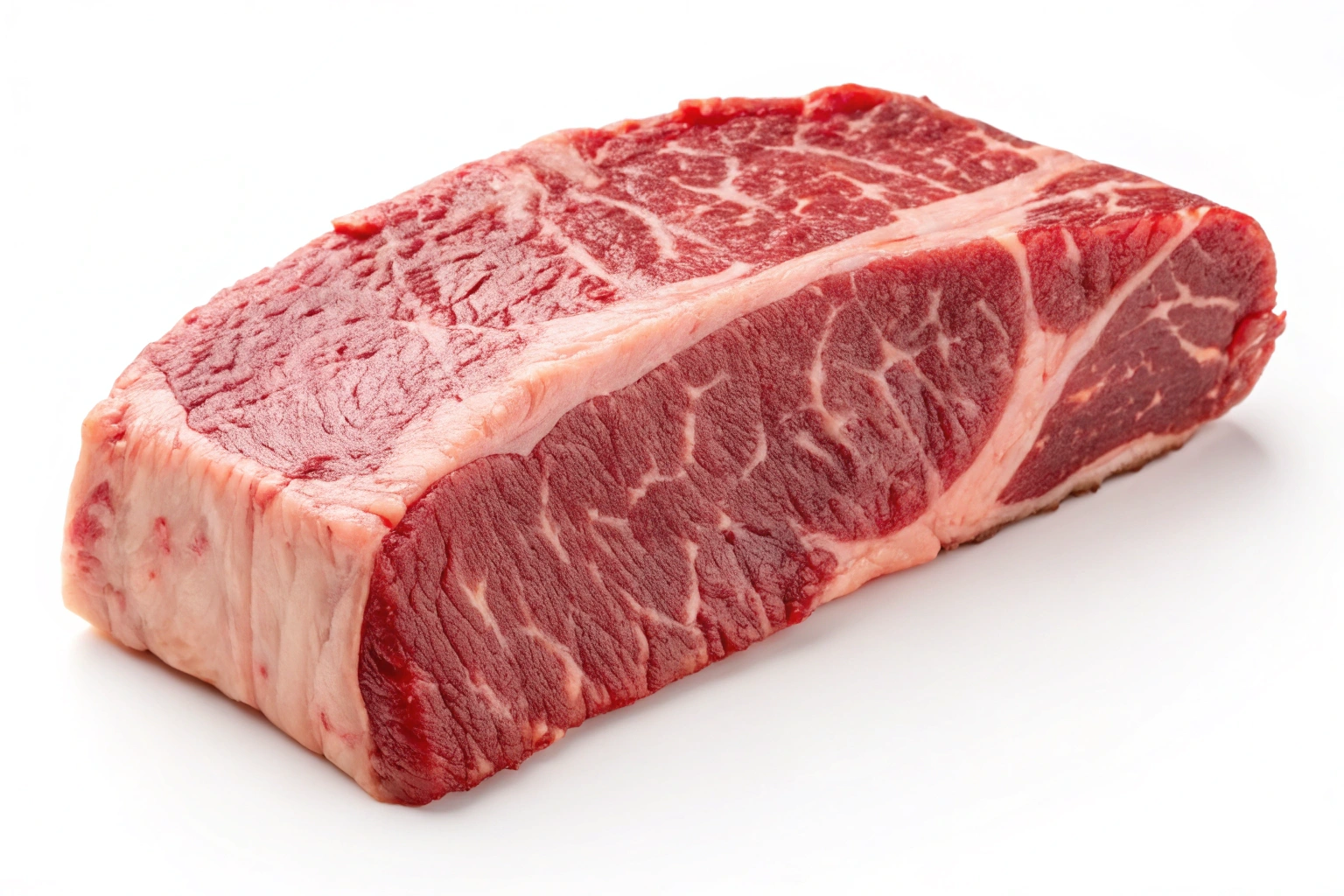
Nutritional Benefits of Beef Teres Major
For those who are mindful of their dietary choices, the teres major offers a great balance between flavor and nutrition. It’s a relatively lean cut, making it an excellent choice for health-conscious consumers who still want to enjoy a high-quality steak.
Nutritional Highlights:
- Protein-Packed: The teres major is rich in protein, which supports muscle repair and growth.
- Low in Fat: While it has just enough marbling to enhance flavor, it’s leaner than cuts like ribeye or brisket.
- Rich in Iron: Like other red meats, the teres major provides a good source of heme iron, which is easily absorbed by the body and helps maintain healthy blood oxygen levels.
- Source of Zinc: Zinc is vital for immune system support and cell repair, and the teres major delivers this essential nutrient in every serving.
- B Vitamins: It contains vitamins like B12 and B6, which are crucial for energy metabolism and brain function.
Caloric Comparison:
For a 4-ounce serving of cooked teres major, the calorie count typically falls between 200-250 calories, depending on the preparation method. This makes it a reasonable choice for those who want to indulge in steak without overloading on calories.
The Growing Popularity of Teres Major
While still considered a “hidden gem,” the teres major is gaining traction among food enthusiasts and chefs. But why is this cut rising in popularity now, despite being around for decades?
1. Increased Interest in Lesser-Known Cuts
- As consumers and chefs become more adventurous, there’s been a shift away from traditional, overused cuts like ribeye and sirloin.
- Cuts like the teres major, tri-tip, and flat iron are becoming trendy as people seek variety and unique dining experiences.
2. Value for Money
- Rising meat prices have driven interest in cuts that provide a premium eating experience at a more affordable cost.
- The teres major delivers filet mignon-like tenderness without the hefty price tag, making it a budget-friendly option for steak lovers.
3. Education and Awareness
- Food bloggers, YouTubers, and chefs are helping spread the word about the teres major.
- As more people discover how easy it is to cook and how flavorful it is, demand continues to grow.
4. Sustainability
- By utilizing more parts of the cow, cuts like the teres major contribute to reduced food waste.
- This aligns with the growing trend of sustainable eating, where consumers are encouraged to try underused cuts of meat.
Tips for Selecting and Storing Beef Teres Major
When it comes to buying and storing teres major, a little extra attention can make all the difference in ensuring the best quality and flavor.
Selecting the Best Teres Major
- Source Matters: Look for beef that’s grass-fed or ethically raised for superior flavor and nutritional benefits.
- Freshness: The meat should have a bright, cherry-red color without any discoloration.
- Marbling: While the teres major is naturally lean, a slight amount of marbling enhances its juiciness.
- Ask Your Butcher: Don’t hesitate to request the teres major by name. A good butcher will know exactly how to cut and prepare it for you.
Proper Storage
- Refrigeration: Store fresh teres major in the refrigerator at 32°F to 40°F and use it within 3-5 days for optimal freshness.
- Freezing: For longer storage, wrap it tightly in plastic wrap or butcher paper and place it in a freezer-safe bag. It can be frozen for up to 6 months.
- Thawing: Always thaw frozen teres major in the refrigerator overnight rather than at room temperature to preserve its texture and flavor.
Advanced Cooking Tips for Teres Major
While the teres major is easy to cook, a few advanced tips can elevate your dish to restaurant-quality levels.
1. Use a Meat Thermometer
- For perfect doneness, use a meat thermometer to monitor the internal temperature:
- Rare: 120°F
- Medium-Rare: 130°F
- Medium: 140°F
- Avoid overcooking, as the teres major is best enjoyed at medium-rare to maintain its tenderness.
2. Reverse Searing Technique
- This method involves slow-roasting the steak in the oven at a low temperature before finishing it with a high-heat sear.
- Reverse searing ensures even cooking and a beautifully caramelized crust.
3. Compound Butters
- Top your teres major steak with flavored butter for an extra layer of indulgence.
- Popular options include garlic herb butter, truffle butter, or blue cheese butter.
4. Dry Brining
- For enhanced flavor, dry brine the teres major by rubbing it with salt and letting it rest uncovered in the refrigerator for 1-2 hours before cooking.
- This method enhances the beef’s natural flavors and improves its texture.
Unique Dishes Featuring Teres Major
If you’re feeling creative, try incorporating the teres major into these unique dishes:
- Beef Teres Major Tacos
- Thinly slice cooked teres major and serve it in soft corn tortillas with guacamole, pickled onions, and salsa verde.
- Asian-Inspired Teres Major Salad
- Toss slices of teres major with mixed greens, sesame dressing, and a sprinkle of toasted sesame seeds for a light, flavorful meal.
- Teres Major Wellington
- Wrap the teres major in puff pastry along with a layer of mushroom duxelles and prosciutto for a gourmet twist on the classic beef Wellington.
- Carpaccio
- Chill the teres major, then thinly slice it and serve raw with olive oil, capers, and shaved Parmesan for an elegant appetizer.
The Future of Teres Major in the Culinary World
With growing awareness and demand, the teres major is poised to become a household name among steak lovers. As more chefs experiment with this cut and showcase its potential, it’s likely to feature on menus and in kitchens around the world. Its affordability, tenderness, and flavor make it a compelling choice for anyone seeking a high-quality steak experience.
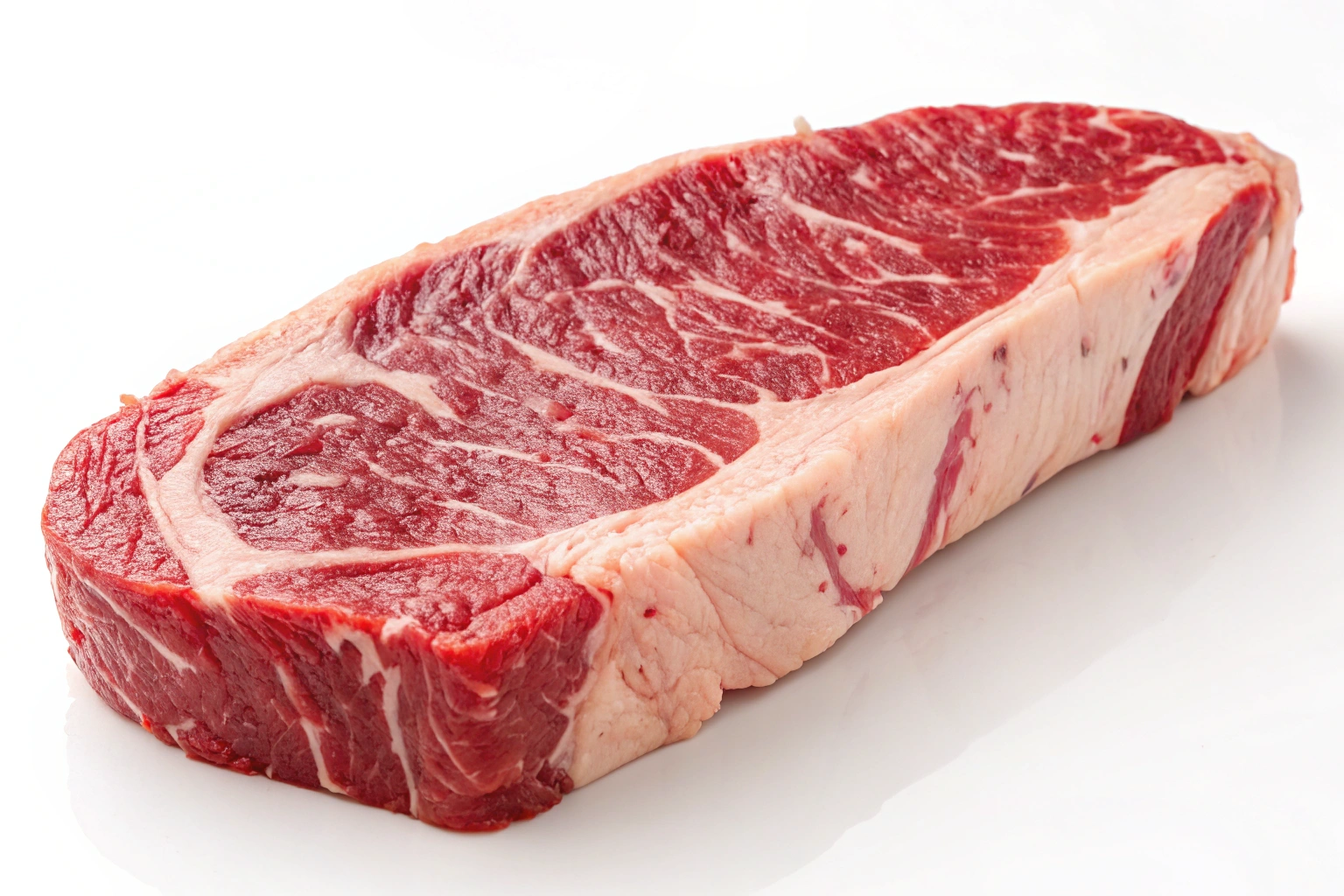
The Beef Teres Major – From Butcher’s Block to Dining Table
In this final section, we’ll explore the cultural and historical significance of the teres major, its role in modern dining trends, and how it has been embraced by chefs and home cooks alike. We’ll also delve into detailed comparisons with other popular cuts and highlight some creative ways to use it for various cuisines.
The Butcher’s Secret: A Hidden Gem Unveiled
For years, the teres major was known as a butcher’s secret — a cut that rarely made its way into the spotlight but was highly prized by those who knew how to find and prepare it. The small size of this cut, combined with its location within the shoulder clod, made it challenging to extract. As a result, butchers often reserved it for themselves or close customers who understood its value.
Why Butchers Love the Teres Major:
- Tenderness Without the Premium Price: The teres major rivals more expensive cuts like tenderloin or filet mignon in tenderness, yet it doesn’t carry the same hefty price tag.
- Versatility: Whether seared, grilled, or roasted, this cut adapts to numerous cooking methods while maintaining its flavor and texture.
- Underrated Status: For years, the teres major flew under the radar, allowing knowledgeable butchers to enjoy it without the widespread demand.
Comparing Teres Major to Other Cuts
To truly appreciate the teres major, it’s helpful to compare it to other popular cuts of beef. Here’s how it stacks up in terms of tenderness, flavor, and versatility:
1. Beef Teres Major vs. Filet Mignon
- Tenderness: Both cuts are exceptionally tender, but the filet mignon has a slight edge due to its location in the tenderloin.
- Flavor: The teres major offers a slightly richer, beefier flavor thanks to its location in the shoulder.
- Cost: Teres major is significantly more affordable, making it a better option for those seeking premium quality without the premium price.
2. Teres Major vs. Flat Iron
- Texture: While the flat iron is tender, it has a slightly coarser grain compared to the silky smoothness of the teres major.
- Marbling: Flat iron often has more marbling, which can enhance its juiciness but makes it slightly higher in fat.
- Versatility: Both cuts excel in grilling, but the teres major’s smaller size makes it easier to handle for individual servings.
3. Teres Major vs. Sirloin
- Flavor: Sirloin is known for its robust beef flavor, but it lacks the natural tenderness of the teres major.
- Cooking Applications: Sirloin is often used for roasts and stews, while the teres major shines as a quick-cooking steak or medallion.
Incorporating Teres Major into Global Cuisines
One of the most exciting aspects of the teres major is its ability to seamlessly fit into a variety of culinary traditions. Here’s how you can use it in recipes inspired by cuisines from around the world:
1. French Cuisine
- Boeuf Bourguignon: While traditionally made with tougher cuts, the teres major can be used for a quicker, more tender version of this classic French stew.
- Steak au Poivre: Coat the teres major with crushed black peppercorns, sear it in a hot skillet, and serve with a creamy cognac sauce for a luxurious dish.
2. Mexican Cuisine
- Carne Asada: Marinate the teres major in lime juice, garlic, and chili powder, then grill it to perfection for authentic carne asada.
- Beef Fajitas: Slice it thinly and cook with bell peppers and onions for a sizzling fajita platter.
3. Italian Cuisine
- Tagliata di Manzo: Thinly slice the teres major after grilling and serve it over arugula with shaved Parmesan and a drizzle of balsamic glaze.
- Beef Ragu: Dice the teres major and slow-cook it with tomatoes, garlic, and herbs for a rich pasta sauce.
4. Asian Cuisine
- Beef Bulgogi: Marinate thin slices of teres major in soy sauce, sesame oil, sugar, and garlic, then stir-fry or grill them for this Korean favorite.
- Pho: Use the teres major as the main protein in a steaming bowl of Vietnamese pho, where its tenderness pairs perfectly with the rich, aromatic broth.
Perfect Pairings: Sides and Beverages
To elevate your teres major dishes even further, it’s important to pair them with complementary sides and beverages. Here are some recommendations:
Side Dishes:
- Garlic Mashed Potatoes: A classic pairing that lets the beef shine while providing a comforting, creamy backdrop.
- Roasted Vegetables: Try carrots, Brussels sprouts, or asparagus, roasted until caramelized for a hint of sweetness.
- Herbed Rice Pilaf: The light, aromatic flavors of a pilaf balance the richness of the beef.
- Grilled Corn on the Cob: Add a touch of smokiness to your meal with charred corn brushed with herb butter.
Beverages:
- Red Wine: A full-bodied red like Cabernet Sauvignon or Malbec pairs beautifully with the beefy flavor of the teres major.
- Craft Beer: An amber ale or stout complements the richness of the steak.
- Cocktails: A classic Old Fashioned or Manhattan brings out the savory notes of the beef.
- Non-Alcoholic Options: Sparkling water with a twist of lime or a lightly brewed iced tea works well as refreshing alternatives.
Creative Presentation Ideas
If you’re hosting a dinner party or simply want to impress your family, presentation is key. Here are a few ways to elevate your teres major dishes visually:
- Plating Medallions: Arrange teres major medallions in a fan shape on the plate, with a dollop of sauce artistically drizzled beside them.
- Board Presentation: Serve slices of teres major on a wooden board with a variety of sides like roasted vegetables, sauces, and bread.
- Mini Skewers: For appetizers, cut the teres major into bite-sized pieces and serve them on mini skewers with dipping sauces.
- Stacked Plating: Create height on the plate by layering the teres major on top of mashed potatoes or polenta and topping it with a garnish like microgreens.
The Teres Major in Fine Dining
As the teres major becomes more widely recognized, it’s increasingly appearing on fine dining menus. Chefs appreciate its versatility and ability to hold up to complex preparations without overshadowing other elements of the dish. Examples include:
- Fusion Cuisine: Using teres major in dishes that blend flavors from multiple culinary traditions, such as a teres major taco with Asian slaw and hoisin glaze.
- Elevated Comfort Food: Serving teres major in upscale versions of familiar dishes, like beef pot pie or sliders.
- Tasting Menus: Presenting the teres major as part of a multi-course tasting menu, where its unique qualities can be showcased in a small, artfully crafted dish.
Conclusion
The teres major is more than just a cut of beef—it’s a testament to how the right combination of knowledge, preparation, and creativity can transform a humble piece of meat into a culinary masterpiece. Its tenderness, versatility, and affordability make it a standout choice for both seasoned chefs and home cooks looking to elevate their cooking game.
By embracing this hidden gem and unlocking its full potential, you’re not just elevating your culinary experience—you’re actively contributing to a more sustainable and mindful way of eating. Now is the time to step into the movement, reduce waste, and celebrate every part of the food we consume. Will you take the leap and make a difference, one delicious bite at a time?

